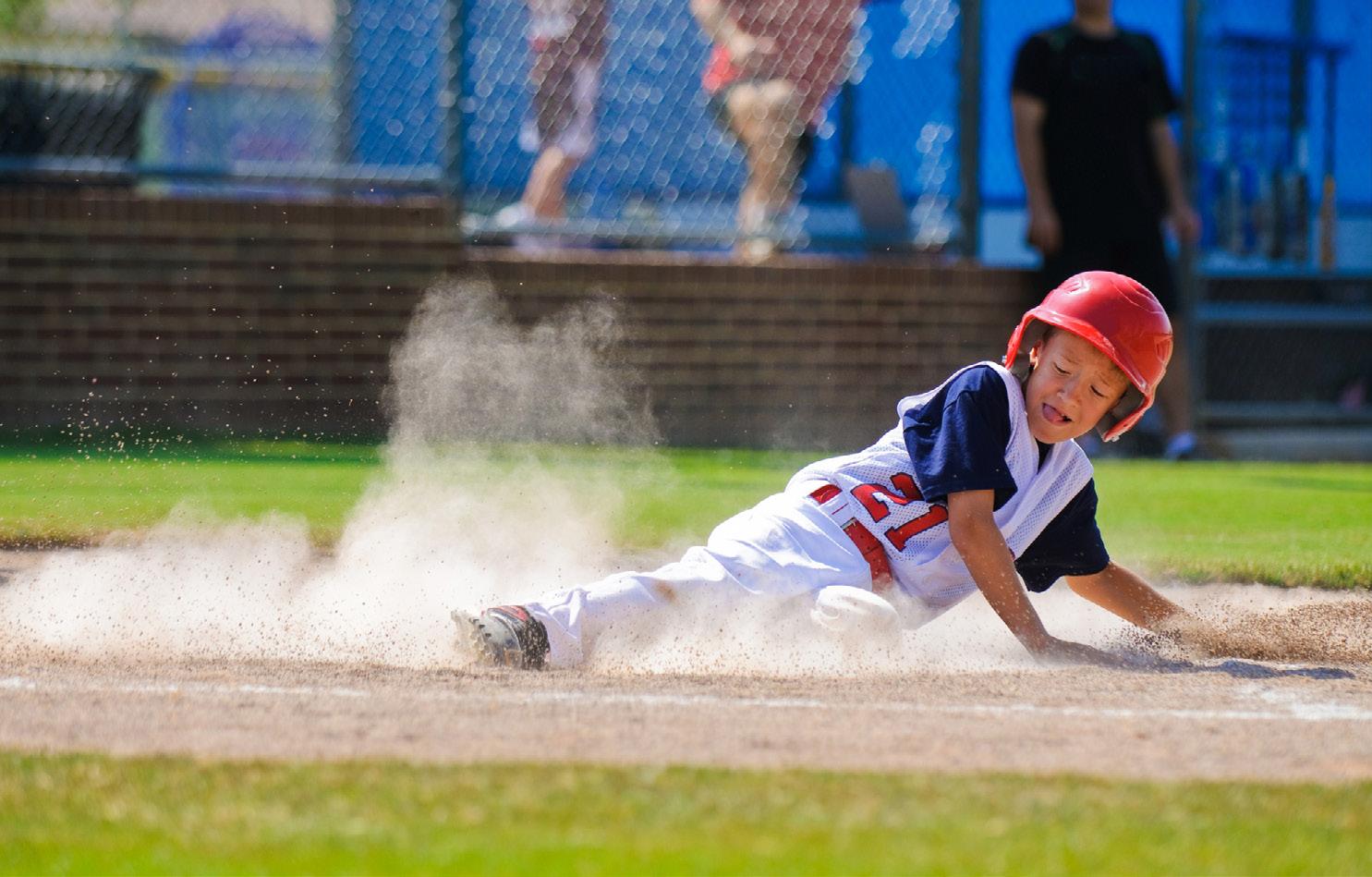
3 minute read
Influenced Behavior
By Christine Olsen
I am a baseball fan. I grew up around the sport. Not only was my father a coach for our local baseball and softball teams, but my siblings and I played the sport as soon as we could hold a bat. The majority of my time now as an adult is spent in the sand of the riding arena, rather than a baseball diamond. When I can get away, there’s nothing I like more than filling the hours with a good ball game.
Advertisement
A while back I remember attending one of my nephew’s baseball games. It was near the end of summer, and there is no better feeling than a hot day melting into a cool evening. While I was watching this game and trying to allow my mind to unwind and relax, there were observations that couldn’t go unnoticed. Particularly it was about the boys’ behavior on wearing their batting helmets.
During the entirety of the game, I was truly amazed at how many times the boys would take off their helmets while they were outside of the dugout. Anyone who has ever played the sport on any level knows that a batter must wear a helmet at all times. The coach would both remind their players to put the helmet on as they walked out, or keep it on as they approached the dugout. Even with the reminders, the kids continued to forget. This behavior became so frequent the referee had to come to the dugout twice to explain the rule, and give the team a warning.
I couldn’t help but wonder what was happening. I did not keep track of how many times this rule was repeated, but it was more than enough that it was no longer a forgotten mistake, but rather a clear objection to the rule. If they are instructed to keep their helmets on, I wondered who is teaching them to take their helmets off? When watching the pros on TV, it is clear to see who the influence is.
In this situation, kids are looking up to their idols and ignoring their coaches’ instructions. As a coach myself, I found this display extremely alarming. I was concerned for my nephew, his safety, and how he took instruction.
Having a sports idol is important for every athlete. It is a physical manifestation of a goal to continue working toward. I remember growing up in the time where we all said, “I want to be like Mike.” Athletic superstars have a way of becoming superhuman in our minds; if we wear the shoes, wear the clothes, and adapt the same attitude we can do it, too. Of course, we all learn at some point it takes a lot more to achieve athletic greatness.
When I look at the riding pros that cover the magazines and dominate social media, I examine what habits they will be setting for the kids that I currently teach. Do they wear helmets? Are they kind to their horses? What kind of message are they sending? I will admit that I have seen examples of riders emulating their idols by purchasing a certain saddle, wearing a certain brand of clothing, or suddenly changing their position because ‘so-and-so’ rides that way.
It is good to be reminded from time to time that as an instructor or coach you are always setting an example as part of your job description. Reflect on the example you are setting today.
You don’t have to be an Olympic rider to set a good example. Every trainer, instructor, coach and working student should be setting an example at all times. Even the attire of the barn staff helps identify the culture of a stable and can help your clients pick up the habits you want them to possess.
Ask your students who their riding icons are. Ask them what qualities they look up to, and why. This could lead to some very interesting discussions. This will not only help you further mentor your rider, but continue developing a great relationship with your client.
About the author: Christine Olsen has 15 years of experience in the industry as a rider, trainer, clinician and instructor. She provides mobile coaching services through Northern Illinois and enjoys sharing her passion for horses with her students.










